When I’m 64 – On being a senior musician during a pandemic
On being a senior musician before, during and (hopefully) after a global pandemic
Before
My little band played our last live, pre-pandemic concert on March 6, 2020 not far from where we live in rural Québec. The coronavirus was already a big deal in the western US, particularly in the Seattle area. I knew from following the CDC and other scientific sources that it was on its way to happening here, too, and that night I had to keep explaining to friends and fans that because of this, I didn’t want to kiss-kiss (we are a very physical culture here) even though I loved them dearly. The emcee actually made jokes at my expense about me being a germaphobe. Five days later, they were closed for business.
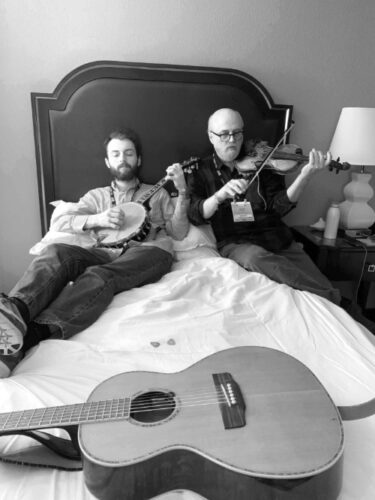
When the lockdown began, my very first thought (despite the horrific reason for it) was that the “new normal” was actually kind of my fantasy scenario — to be sequestered in my cozy rural home, wood stove fired up against the record March cold, nobody coming to visit, not preparing to go off anywhere and at least a temporary stop to booking the increasingly elusive gigs for our band, a never-ending task I have grown to dread more and more over the 30 years I’ve been doing it. For me, it was like a dream staycation!
Just a few weeks prior, we had returned from promoting our band at the world’s largest folk music industry conference, Folk Alliance International, held this year in New Orleans. While there, we invariably hugged and kissed hundreds of friends, old and new, arriving from all over the planet, not realizing that the city was about to become a major virus hotspot. Maybe it already was and we just didn’t know it.
We spent an embarrassing amount of money to get there, to stay (but rarely sleep) in the very expensive host hotel, eat at amazing local restaurants and drink spicy, twelve-dollar Bloody Caesars in the lobby bar while schmoozing with and trying to wrangle jobs from presenters who came from all over North America and abroad to attend the thousands of artist “showcases” (short, unpaid performances) vying for their attention.
To get folks to come see you, you have to stick up posters, hand out little promo cards and swag, for example, guitar picks with your name on them, stickers people will want to stick on something, t-shirts, branded rolling papers. You get the idea. You email them pre-conference and Facebook Message them daily with your showcase times and locations, letting them know there will be alcohol and good munchies there, and pray that they show up to hear at least 2 minutes of your 15–20 minute set at 2:00 a.m. You used to hand out lots of CDs but now you make do with a download card that lets them grab your music online (few actually redeem these cards). Almost nobody except other artists is willing to carry around a bunch of CDs (they need their hands for the free beer and munchies). Most attendees (us included) go through their conference goodie bag and chuck nearly everything in the hotel wastebasket, leaving any promo CDs for the hotel staff, who may or may not own a CD player or need another CD from a singer-songwriter they’ve never heard of.
The irony of being a so-called “starving” artist but staying in a luxury hotel is not lost on us… particularly when we find ourselves putting money into the tip jars of New Orleans street performers, some of them amazing musicians who would have had presenters drooling had they had been able to afford the conference fees.
We got sick on our last day at the conference, but we didn’t even go to sleep that night because we had to take the 7:00 a.m. Monday train to North Carolina to begin a short winter tour, all of ended up being cancelled due to either illness or bad weather. Despite being sick (we ended up spending three nights in a hotel because the friends who had been housing us were even sicker than we were) and losing all revenue for the tour, we still didn’t suspect for a minute just how our world was about to change, maybe forever.
When you are the type of musician who plays folk festivals, small venues and house concerts for modest fees; when you play traditional or old-fashioned sounding genres; when your music doesn’t involve a lot of moving around on stage (if you are not a step dancer or a flashy player); when you don’t have 10,000 (or even 1000) subscribers to your YouTube channel because your public isn’t of an age that they automatically record everything you do on their smartphone; if you don’t publish Facebook pictures of yourself with famous people in the greenroom at hipster festivals Down Under; if your hair is grey and you didn’t purposely dye it that color — agents and managers do not jump at the chance to represent you. Ageism even comes from the saints who do the thankless job of booking artists — they have to sell us, after all. Even in my early forties, I fielded suggestions from agents and presenters to “Please put the younger, cuter musicians in the front on your poster”. We’ve had requests to add a step dancer to our show — because an older, seated fiddler and guitarist just don’t fill up a stage (I am a foot percussionist so I couldn’t stand up even if I wanted to). That’s why our own agent phased us out in favor of our kids’ hotter, louder — and let’s face it — younger band.
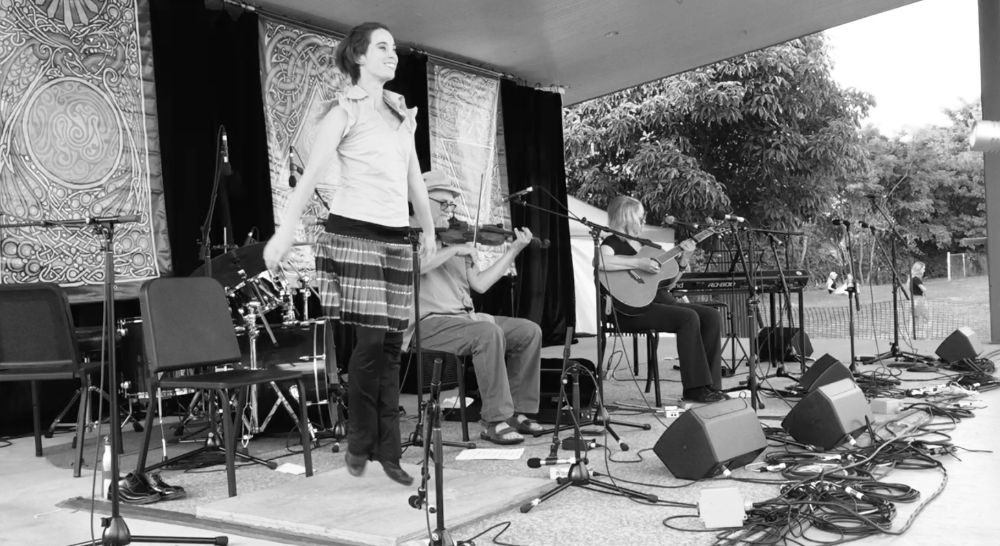
So you end up pitching yourself, and any artist will tell you that there are few things as uncomfortable as being forced to tell people (who hear this countless times daily) just how great you are. Booking is by far the most painful job I’ve ever done, and to date I’ve shoveled a great deal of horse poop; peeled potatoes; cleaned houses; waited tables and mixed drinks; mowed lawns; roofed houses; translated books; designed marketing material and then websites; planted flower bulbs and changed light bulbs; made blueprints; run a warehouse; taught skiing, guitar and design; sold architectural supplies; managed a plant store and wiped a lot of cute, tiny asses… so that’s saying something.
Twenty years ago, booking a gig involved lots of phone calls where you often spoke directly to the person doing the hiring, or left a message that might actually be returned. Ten years ago, those phone calls turned into emails — tedious for non-typists (mainly men of a certain age) but actually an improvement for those of us who like to see things in writing, save them to a virtual file folder or print them out for future reference. Fast forward to today and if you haven’t personally met a presenter, you will find yourself visiting a website where there is often no phone number and sometimes even no email address. Instead, there is a page entitled “Play at the festival” (or the club or even the itsy-bitsy coffeehouse where you will likely play for the door even if only three people attend). You must fill out a form with your biography, YouTube, website and social links, a photo upload, possibly press clippings or a link to your downloadable EPK (electronic press kit). Sometimes, the text fields have limits that require you to edit your information (usually in mouse-size type) to make it fit. You spend at least 30 minutes doing this and after you hit Submit, the form either times out (because it took you so long to repackage this information that is already handy on your website or in a document you could easily attach to an email if that was an option), or it directs you to a Thank You For Applying page reminding you “please don’t call us”. As someone who builds web forms, I am especially aware of how many things can go wrong with this scenario. Will they still consider hiring you if you dare to call the number they specifically asked you not to call?
If you are relegated to contacting a venue via their Facebook page, also quite common, you may leave a direct message that nobody responds to, despite the fact that “following” the page allows you to see that the page admin is indeed online at this exact minute. I once submitted an email from the website of a presenter I had actually met, who regularly presented bands just like mine. In fact, they had themselves friended me on Facebook (possibly because we were old-timers on the trad scene), so after two months without a response, I shot off a direct message asking if they’d ever received my email. Literally thirty seconds later, I received a snippy response telling me that they couldn’t possibly follow up on all the emails they get from the website (they are a restaurant, too)!
Booking can be a discouraging, demeaning exercise, definitely not for the faint of heart.
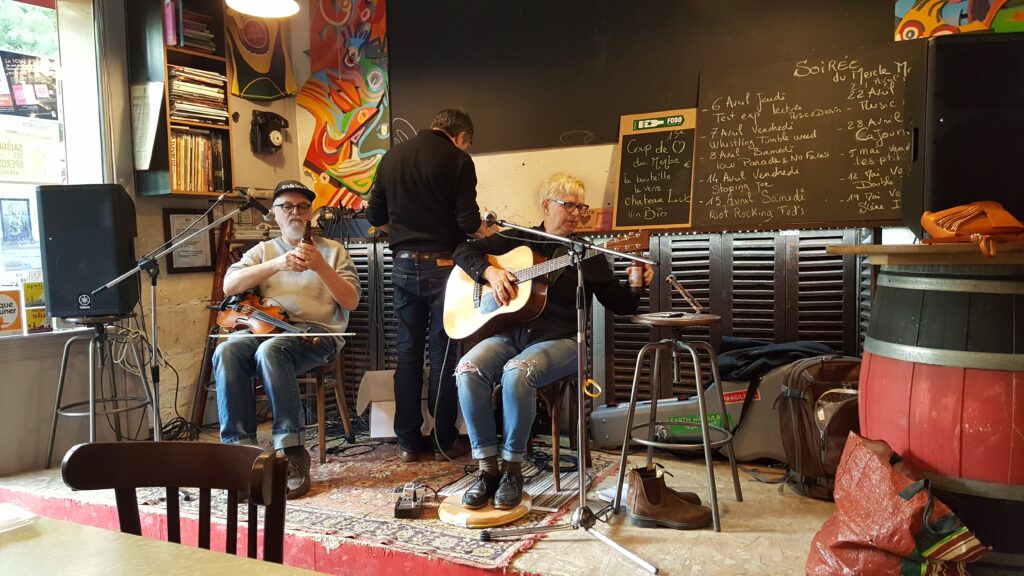
When you are a “mature” performer it can be even worse . At a certain point, you’ve attempted to retrain yourself to quit worrying about visual appeal and begun playing with a whole new deck of cards . You now refer to yourself in writing as a “veteran”, “authentic” or a “master” of whatever your specialty is (there may be truth to this, but still… the truth isn’t always reassuring). Even though everybody says that your music is what counts and that you look just fine, at some point you will find yourself on stage praying that the festival photographer won’t shoot you from below, capturing your sagging upper arms and double chin, or the fact that the waist button of your jeans has popped open.
You stop making music videos (featuring you) because there are no good angles. Instead, you use artistic footage of your dog running through a field of daisies while you sing in the background.
Nearly every musician you are competing with is younger, by default better looking and seems to you more technically impressive than you have ever been — your own kids being no exception to that rule, having followed in your footsteps to become performers themselves, getting paid a lot more than you did at their age. There is rarely an unappealing camera angle to be found on their YouTube channel. You wonder how they could have decided to become professional musicians at all, after being hauled all over the countryside on endless drives to endure peeing in sweaty port-a-johns and waiting for their parents to finish yet another set at festivals where you never let them buy the three-hundred dollar turquoise rings, over-priced leather backpacks or Peruvian sweaters in the artisan tent. If they are exhausted at the end of a long day of following you around, they know to look for you in the greenroom if there is one.
With the possible exception of high-profile pop stars and classical orchestras, most musicians are for all practical purposes unemployed the day following their latest gig. The sheer quantity of time that must be spent to remain in the public eye, even when you don’t have upcoming concerts, is phenomenal — cultivating leads, managing emailing lists, attending industry events – and it can feel like you are starting from zero every time you begin (yet again) to book a season’s worth of gigs.
To compete, you must of course have a press kit, a website, a Facebook page, a YouTube channel and a presence on Twitter and Instagram at minimum, and regularly add content to these platforms, whether you are actually playing gigs or not. Where applicable, you apply for arts funding grants to pay for as much of this as possible. The granting body also wants to see your videos and to know how many unique visitors you had on your website, even though you mostly interact with your fans on social media and your website has become a static brochure, for all practical purposes. You may have already noticed that people under forty-five tend to have minimal websites, while those of a certain age contain everything but the kitchen sink.
Oh yeah, and you still need to practice, write new music, arrange, record and release both a physical and digital product, maybe even a digital single or EP (a short album, despite EP very un-semantically standing for “extended play”).
During
You can just imagine what havoc was wreaked upon this complex ecosystem with the onset of Covid-19, the exception being that suddenly you had LOTS of time to practice and create — but nowhere to show, ideally in exchange for money, how great your new material is. To record your new album while on this unplanned hiatus, your band has to be able to get together, often in a professional studio, currently impossible unless you are living with your bandmates and/or have a home studio at your service.
For my band, virtually every potential or in-discussion contract generated by multiple wee-hours performances and networking at the conference in New Orleans is basically dead and gone, a conversation that was started but never finished, filed under “maybe” instead of “active” in my virtual bookings folder. These conversations will have to be taken off life support in (praying nightly) late 2020, or (more likely) early 2021… or even as far off as 2022, assuming that the venues who wanted us survive the pandemic. Many (if not most) folk venues already exist in a perpetual state of struggle, run by the good grace of volunteers and/or underpaid staff. Here in Canada, they are sometimes helped by arts grants from our amazing federal arts initiatives as well as provincial programs. Some are simply too small to even consider reopening because the required social distancing that is likely to remain in effect for some time is a distant dream. A space that can only accommodate a maximum of 60 audience members cannot pay performers a reasonable fee with only 30 people in attendance, and they certainly can’t (legally) sell enough beer to those people to make up the difference.
For Canadian musicians who want to play in the US, it takes a permit that involves a union membership and an FBI background check, even if you have been coming and going legally across the (now-closed) border for years. Then there are the fees and the hoping and praying that it will be approved. My band frequently tours in the U.S., and because we play traditional Québécois music, we are able to obtain a special “culturally-unique” permit, but this year, all of the work done to prepare the application and the thousands of dollars spent might as well have been flushed down the toilet as it is unlikely that we will be able to make use of it.
With the onset of the pandemic, nearly everybody has created — or attempted to create — some online version of their event, from virtual folk festivals (like local Festival Mémoire et Racines) to private house concerts, folk music camps (like AlgomaTrad) to open mic nights. Overnight, these venues have had to change the way people sign up, pay and experience what they have to offer, and the learning curve can be steep. While it is reassuring that you’ll still be able to learn how to play that fiddle tune with a master fiddler (on your screen), see your favorite band (on your screen), share your latest composition with participants and spectators (on their screens), it just ain’t quite the same.
Many of us are doing it to prove that we still exist and to support those presenters and artists we care about. But most of us are seriously tired of sitting in front of a computer screen (remember, we have all become instant telecommuters). We are suffering from carpal tunnel syndrome, Facebook finger and Zoom fatigue, and it is clear that the market is becoming quickly saturated. In our previous life, audiences couldn’t possibly have traveled, in one year, to all the places that now present online events, overwhelming us with options every night of the week. Sharing content to Facebook in 2019 usually meant that your followers would see it — not so today — there is so much content being created due to confinement that we simply can’t see it all or hope to keep up with it as it sails on by without a single comment, like or share.
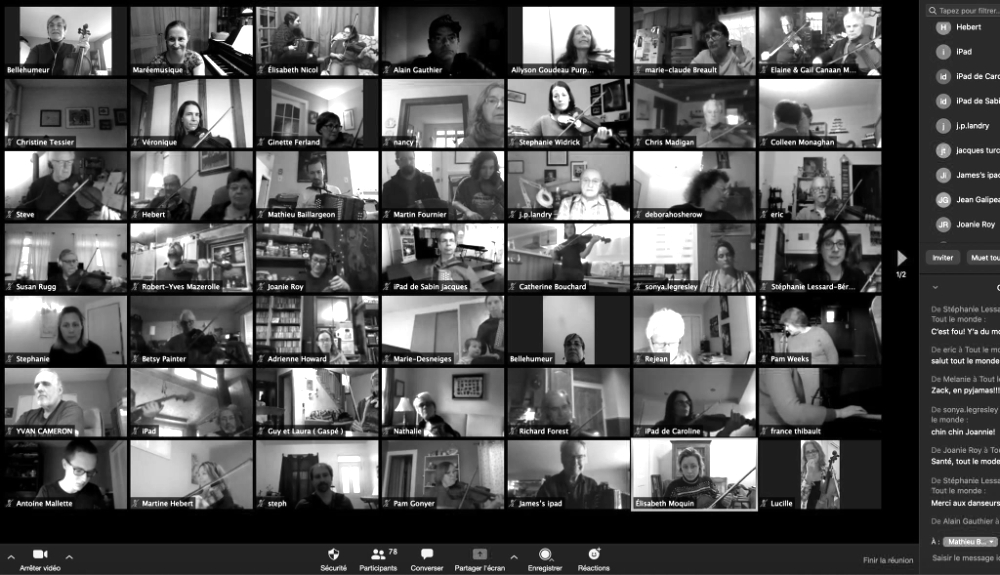
In the past few years, the switch to streaming consumption of music has been a huge downside for many artists in multiple genres, and especially hard for folk artists who already get only a tiny piece of the pie. We have gone from being able to count on selling hundreds of CDs at a festival to selling a few dozen — and often less. House concerts are pretty much the only place where people seem committed to supporting the artists by buying their physical music. They may survive the pandemic because they do not require upkeep and staff and can potentially happen out-of-doors, weather permitting, and assuming your area permits small, private gatherings. They won’t “go out of business” if they don’t happen for a period of time, because house concert audiences are usually made up of people who know each other or have a common connection that keeps them in touch.
No matter what your dearest (but let’s admit it, stubborn and change-resistant) friends say, CDs are on the way out. Yes, vinyl has had a sudden resurgence due to cheap USB turntables, but most vinyl sales are to people your kids’ age who think it’s cool and even kinda cute. I still remember the day my son asked me “Mom, what’s an LP?”. The reality is that the listening experience is slowly migrating to music platforms where you can listen to anything your heart desires for a monthly, all-you-can-eat fee, without ever holding the album in your hand or even downloading the tracks to your computer, tablet or smartphone. I admit to having a family subscription to a platform that lets me listen to the music my kids like, not to mention a non-stop stream of music from my childhood while on road trips (remember them?). But not everyone is a digital subscriber as of yet, so the insultingly tiny percentages that streaming services (like Apple Music and Spotify, to name but two) pay do not make up for the massive time and money artists spend to produce their music, unless they are a top artist with enormous commercial success. And each platform has a different formula for calculating when a track merits a payout and how much — Spotify requires listening for 30 seconds and the song must stream more than once; Apple says 20 seconds makes you eligible and pays a higher rate per stream, but streaming rates vary depending upon artist ratings, listener country and many other factors. Streaming and the improved tracking of digital audio has the potential to be lucrative but it hasn’t yet trickled down to all genres. The streaming shakeout is still happening and it isn’t clear how it will all end.
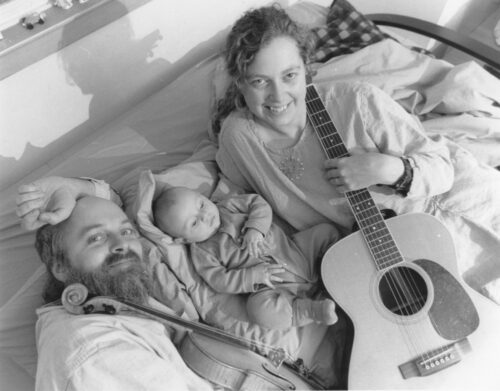
Ironically, since the beginning of the pandemic, my own band (as well as my now-defunct bands who made CDs back in the day) have actually seen a subtle uptick in sales of on all delivery platforms — streaming, digital downloads and mail order CDs on our own website — probably due to people being home and spending more time online than when they had to get out of their pyjamas and go to their (realtime) job. As a web developer I am able to stitch together the various delivery options and benefit 100% from them (the potential profit margin from managing your own online sales is high) but not everybody finds it easy to do so. Most of the companies selling digital downloads for artists take a sizeable chunk of any profits and in the process steal the traffic that should be going to your own website. Downloads have to be hosted somewhere, usually NOT your own website because they use too much RAM during download, and it costs to park files on a server, not to mention paying someone to set it up for you if you are not a tech whiz.
As a sixty-plus-year-old musician with a long and sometimes marginal career behind me, the covid confinement period has become the catalyst to get me off the hamster wheel to try something new. I consider myself lucky to have that option, both in my skill set and in my economic and family situation. I own my house, am nearly debt-free, and I am about to join my partner in claiming my retirement pension. I am also thankful to live in a country that provides me with health care, even if unemployed, as well as financial support to see me through this bumpy transition where we all adjust — overnight — to living without our regular incomes.
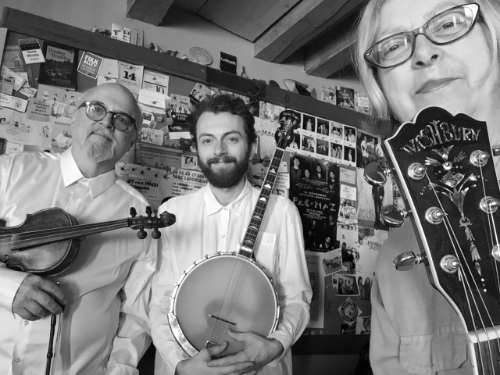
As senior artists, we sometimes (but not always) have less to lose — our kids may be grown and gone (and in our case, sometimes competing with us for the same music jobs — also occasionally awkward). We are more likely to accept a contract for love despite the money, thus maintaining our public profile, although in our younger days, we have already done that way more often than we would like to publicly admit. That is one lesson our kids learned from us and we are happy that they approach their careers so professionally from the start.
Meanwhile, wearing my designer/developer hat, my clients — artists, managers and not-for-profits — still unsure how they will pay for it, are asking for help figuring out live streaming, getting product for sale online and trying to milk every possible opportunity to earn a few cents via the internet, our new number one venue. Zoom, Facebook and YouTube live concerts turn artists into performer, sound tech and promoter rolled into one, generating a whole new level of stress, offering a host of exciting new options for screwing up. How about an intimate look up your nostrils as you fix the settings on your computer during a buggy live stream, all the while juggling your guitar and avoiding mic stands and cords (or the cat)? It is sublimely painful to watch a live concert that would sound great if the streaming platform’s compression algorithms would leave it alone, or one that repeatedly freezes due to buffering or internet latency issues. Not to mention trying to present a song without any audience interaction. It feels positively bizarre to say “thank you” at the end of a piece where the applause would normally be when there is only radio silence.
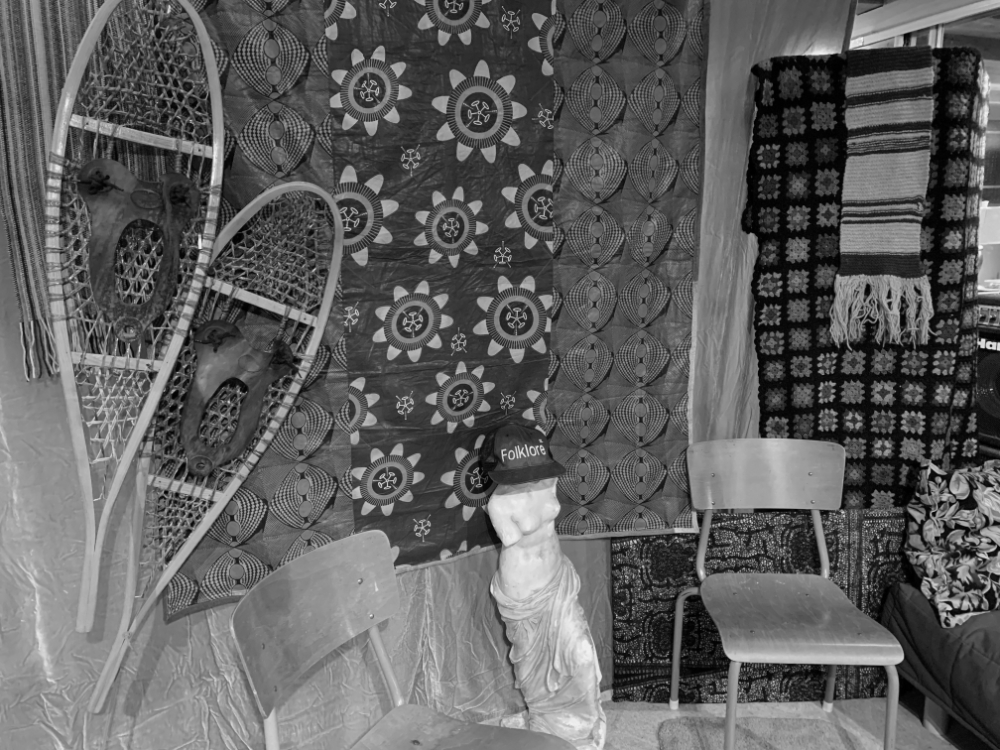
After
While the tragic pandemic takeaway for the performing arts will likely — and very sadly — be an abrupt end to many small venues, and certainly the end to the careers of some, maybe even many, artists (a May 2020 survey says that 19% of U.K. musicians are considering ending their careers) — there may still be a wafer-thin, silver lining to be found in this very dark cloud.
There will be the forced weeding of the artistic garden, which means that some very, very good artists will never make it for mostly economic reasons, but those who are able to stick it out, brilliant or otherwise, will have a smaller field of competitors and may develop successful careers once venues have figured out how to exist again.
Sales of instruments and music gear is up, according to Rolling Stone magazine, so yay for some retailers. Learn to play the ùkulele or drums in your (enormously) free time.
There are likely to be fewer live music industry events, which will reduce the cost of promotion for artists and travel expenses for presenters, and perhaps venues, with fewer artists hounding them for gigs, will begin answering the phone and publishing contact information once again. Maybe it will be the end (hallelujah!) to live (unpaid) showcasing.
Maybe the public, who by now realize just how important entertainment and art are in our lives, will be willing to pay just a teensy bit more for what they now know they can’t live without. This has begun to work for the publication world, with digital subscriptions to many well-known, formerly-print magazines and newspapers on the rise.
Or maybe I’m just being optimistic.
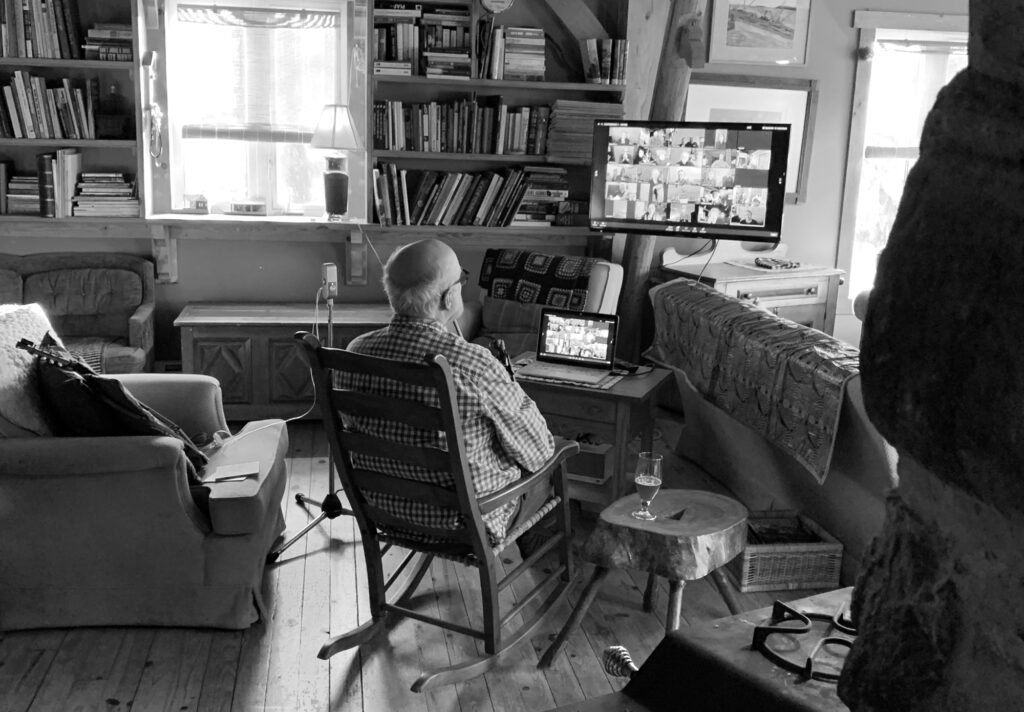
In the meantime, once out-of-region travel is more broadly permitted and advisable, our performing fantasy involves quarantining for two weeks together with our bandmates before setting off on a busking (street performance) tour across Canada in a camper so we can cook our own meals and minimize contact. We’ll stop where it appeals to us and do an impromptu set —in the town square, on a church lawn, in a parking lot or a local park. No contracts, no calendar (and hopefully, no arrests for unlawful performances). We’ll pass the hat and accept offerings from people’s gardens or kitchens in exchange for delivering some unexpected art and a bit of joy. Without the option of reasonably-well-paying gigs, it’s actually the way we like it best, doin’ what comes naturally, naturally. Maybe you’ll come across us during the summer of 2021, on a starry night or a breezy day, somewhere in a remote, Canadian prairie town or on a perfect island surrounded by sparkling water. Fingers crossed.
One thing I am sure of — that there is nothing like a long period of confinement and not knowing what tomorrow will bring to make you appreciate the good old days.
Published on Medium, also available as a podcast from Pas d’accent, everywhere.
Photos courtesy of Dana Whittle